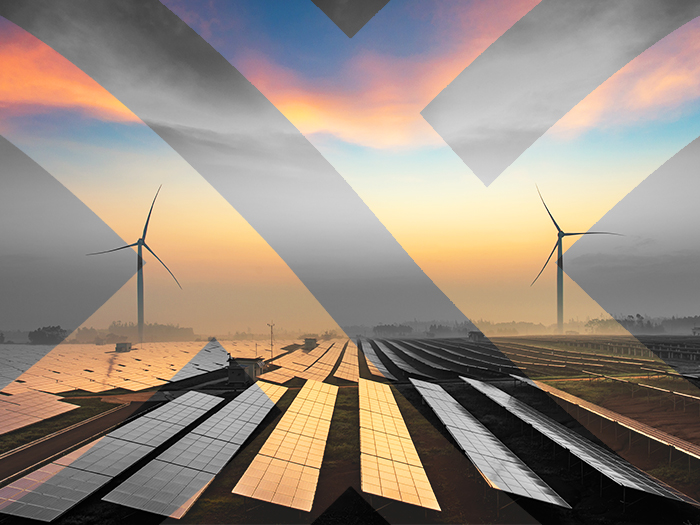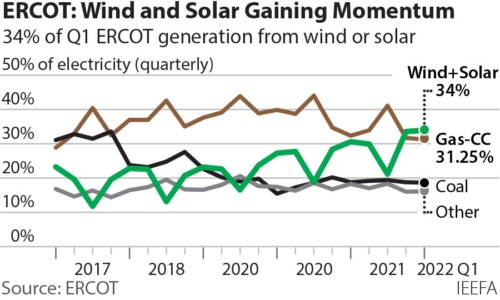Insights
better business decisions
Posted 3 years ago | 3 minute read

Wind and solar generated 34% of Texas power in Q1 2022
The restructuring of the Texas electric generation market continued in the first quarter of 2022, with wind and solar producing a record 34% of the power dispatched by ERCOT the Institute of Energy Economics and Financial Analysis (IEEFA) has said.
Published on April 25, the report notes that through Q1 2022, demand was up more than 9% to 95.1M MWh, but wind and solar are growing even faster. Wind generation was up 14% for the first three months while solar output jumped 85%. Together, wind and solar accounted for 71% of the generation increase during the quarter. IEEFA noted that the gap between gas and renewables generation has widened, with wind and solar producing 32.3M MWh in the quarter, compared to 29.7M MWh for the region’s gas plants.
Solar capacity totalling another 8,000MW is expected online by the end of 2023. Wind, with some 35,000 MW of capacity already installed, is expected to grow at a slower rate. But ERCOT still sees the potential for installed wind generation to top 40,000 MW by the end of 2023. In addition to the growing wind and solar generation resources, developers have big plans for battery storage. There was just 833 MW of installed battery storage capacity in ERCOT at the end of 2021; the system operator now says that could jump to almost 5,000 MW by the end of this year and more than 6,500 MW by 2024.

GridBeyond SVP North America Wayne Muncaster said:
“The changing paradigm of our sector, with the electrification of many of our most energy intensive assets, decentralization of energy generation, and the long overdue digitalization of the energy sector, is already seeing new and innovative technologies gathering pace. Appropriate regulatory and market frameworks (setting the rules without stifling innovation) allowing for a more dynamic portfolio, including distributed energy resources, grid-scale low-carbon energy generation and market-wide participation by distributed energy resources management systems through flexibility services are essential. We have the opportunity to reach a truly participative equilibrium of the electric system in the near future where we all play our part, but much work remains to be done.
“Through collaboration, learning lessons from other markets and ensuring that focus of policy and regulatory interventions isn’t just on the supply-side, but takes into account the entire energy value chain including latent time of use flexibility in the existing infrastructure, grid operators and states can ensure resilience while making moves towards a cleaner, greener economy.”